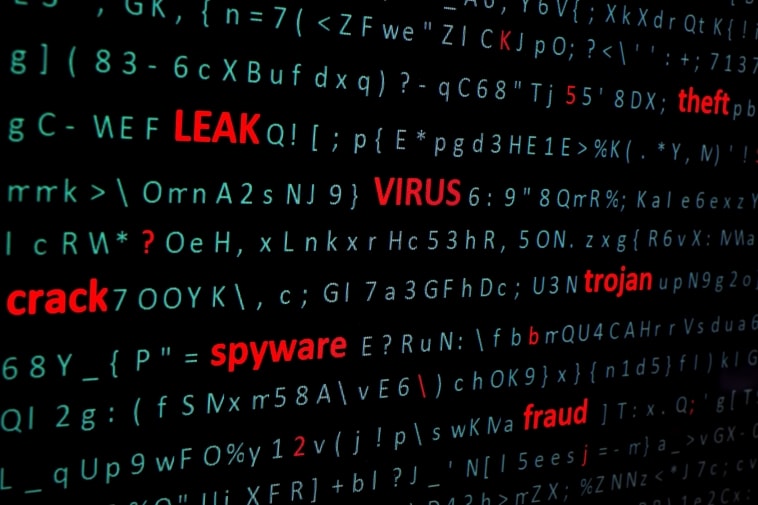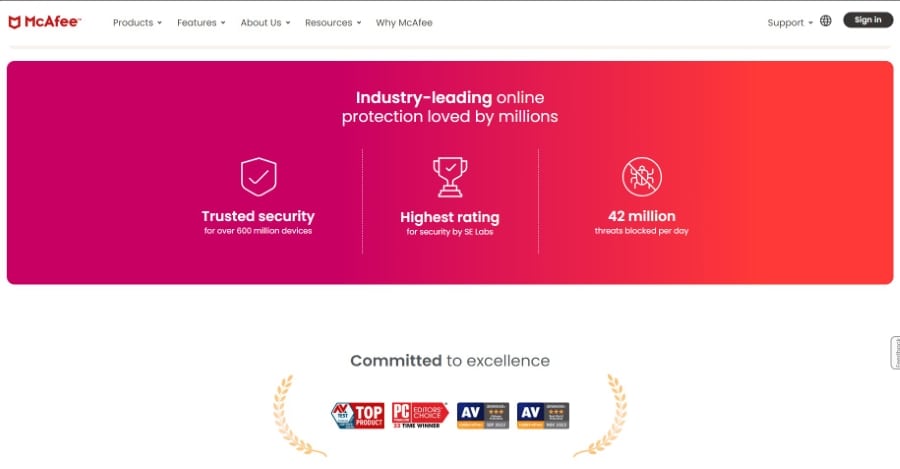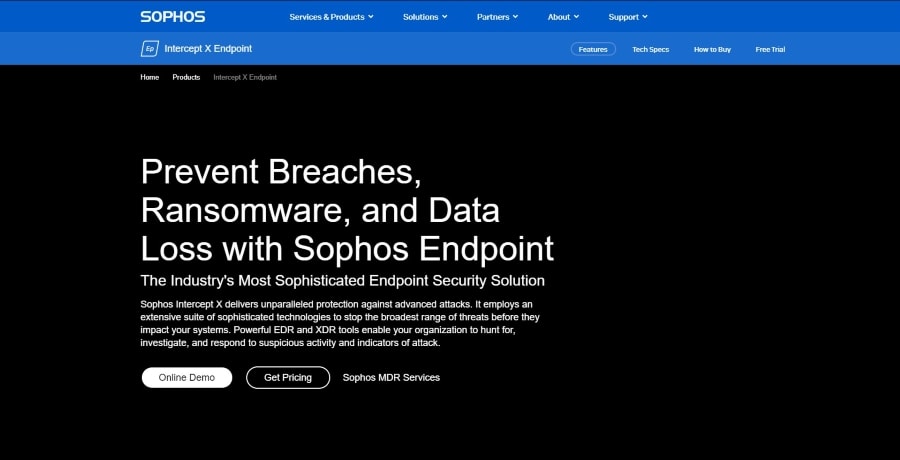Threat Monitor and Protection Tools: Expert Tips and Insights

With the rise of sophisticated cyber attacks, it is essential to enhance cybersecurity measures to protect sensitive information and maintain the integrity of systems. One effective tool that can significantly contribute to the overall security posture is a threat monitor.
A threat monitor offers numerous benefits in enhancing cybersecurity. It provides real-time visibility into network activities, allowing organizations to identify and respond to potential threats promptly. By monitoring network traffic, a threat monitor can detect malicious activities, such as unauthorized access attempts or suspicious data transfers, and alert security teams to take appropriate actions.
Overall, the use of a threat monitor enables organizations to stay one step ahead of cyber threats by providing valuable insights and early warning signs, ultimately enhancing their cybersecurity posture.
On this page:
- Understanding the Importance of Cybersecurity
- Introduction to Threat Monitor: Understanding the Basics
- Benefits of Using a Threat Monitor
- Top Threat Monitors & Protection Software
- Comparing Threat Monitor Software & Tools
- Best Practices for Maintaining Cybersecurity
- Threat Monitor: Frequently Asked Questions
Understanding the Importance of Cybersecurity
The significance of cybersecurity lies in its ability to safeguard sensitive information and critical infrastructure from malicious actors, ensuring the integrity, confidentiality, and availability of digital assets in an increasingly interconnected world.
With the rapid advancement of technology and the proliferation of digital platforms, the need for robust cybersecurity measures becomes paramount.
Cyberattacks can have devastating consequences, both for individuals and organizations, leading to financial losses, reputational damage, and even the compromise of national security.
Therefore, it is crucial to recognize the importance of cybersecurity in protecting personal and corporate data, as well as the overall stability and functionality of our interconnected systems.
In an era where individuals and organizations heavily rely on technology, cybersecurity acts as the first line of defense against cyber threats.
It prevents unauthorized access to sensitive information, such as personal data, financial records, and intellectual property, thereby safeguarding the privacy and rights of individuals.
Moreover, cybersecurity plays a vital role in protecting critical infrastructure, which includes essential services like energy, transportation, and communication systems.
By ensuring the availability and reliability of these systems, cybersecurity enables the smooth functioning of society and facilitates economic growth.
As technology continues to advance, the significance of cybersecurity will only increase, as the potential for cyber threats and attacks becomes more sophisticated and widespread.
Therefore, it is imperative to prioritize cybersecurity measures and continually enhance them to address emerging threats and protect the digital assets that underpin our interconnected world.
Introduction to Threat Monitor: Understanding the Basics
Basics of Threat Monitor
Threat Monitor is a powerful tool that helps organizations detect and respond to security threats in real-time.
By monitoring network traffic and analyzing security events, Threat Monitor provides valuable insights into potential threats and helps organizations take proactive measures to protect their systems and data.
Understanding Threat Detection: Key Concepts and Significance
Key Concepts and Significance
Threat detection is a crucial aspect of cybersecurity that involves identifying and responding to potential security breaches and attacks.
By understanding the key concepts and significance of threat detection, organizations can better protect their systems and data from malicious actors.
Let’s dive into some key concepts and why threat detection is so important.
Key Concepts
-
Anomaly Detection: Anomaly detection is a fundamental concept in threat detection. It involves monitoring and analyzing network traffic, system logs, and user behavior to identify any unusual or suspicious activities. By establishing a baseline of typical behavior, security teams can quickly identify deviations that may indicate a potential threat.
-
Signature-Based Detection: Signature-based detection involves comparing incoming data or files against a database of known attack patterns or signatures. If a match is found, it indicates a potential threat. While effective against known threats, signature-based detection may struggle with detecting new or previously unseen attacks.
-
Behavioral Analysis: Behavioral analysis focuses on understanding the typical behavior of users, systems, and networks. By establishing patterns and identifying deviations, security teams can detect potential threats. This approach is particularly useful for detecting insider threats or advanced persistent threats (APTs) that may evade traditional security measures.
Significance of Threat Detection
-
Early Threat Identification: Threat detection enables organizations to identify potential security breaches at an early stage. By detecting and responding to threats promptly, organizations can minimize the impact of an attack and prevent further damage.
-
Reduced Downtime: A successful cyber attack can lead to significant downtime and disruption to business operations. By detecting threats in real-time, organizations can take immediate action to mitigate the risks and minimize downtime.
-
Protection of Sensitive Data: Threat detection plays a crucial role in safeguarding sensitive data. By monitoring network traffic and user behavior, organizations can identify potential data breaches and prevent unauthorized access to critical information.
-
Compliance Requirements: Many industries have specific compliance requirements that organizations must adhere to. Threat detection helps organizations meet these requirements by implementing the necessary security measures and demonstrating their commitment to protecting sensitive data.
-
Enhanced Incident Response: Threat detection provides valuable insights into the nature and scope of an attack, enabling security teams to respond effectively. By understanding the tactics and techniques employed by attackers, organizations can develop robust incident response plans and improve their overall cybersecurity posture.
Benefits of Using a Threat Monitor
The use of a threat monitor offers several benefits in enhancing cybersecurity.
Firstly, it provides real-time threat detection, allowing organizations to promptly identify and respond to potential security breaches.
Additionally, a threat monitor serves as an early warning system, alerting stakeholders to potential threats before they can cause significant damage.
Lastly, by minimizing downtime and financial losses, a threat monitor helps organizations mitigate the negative impact of cyberattacks, ensuring business continuity and safeguarding valuable resources.
Real-time threat detection
Utilizing advanced algorithms and machine learning techniques, real-time threat detection is achieved by continuously monitoring network traffic and analyzing patterns for any potential security breaches.
To enhance cybersecurity with real-time threat detection, organizations can benefit from the following:
-
Immediate response: Real-time threat detection enables organizations to respond immediately to potential security breaches. By identifying threats as they occur, organizations can take immediate action to mitigate the risks and prevent further damage. This can include blocking suspicious IP addresses, isolating affected systems, or deploying additional security measures to protect sensitive data.
-
Early warning system: Real-time threat detection serves as an early warning system, allowing organizations to stay one step ahead of cybercriminals. By continuously monitoring network traffic, organizations can identify emerging threats and vulnerabilities before they can be exploited. This proactive approach helps organizations prioritize their security efforts and allocate resources effectively to address the most critical threats.
-
Continuous monitoring: Real-time threat detection provides organizations with continuous visibility into their network security. By monitoring network traffic round the clock, organizations can identify any unusual or suspicious activities that may indicate a potential security breach. This continuous monitoring helps organizations maintain a strong security posture and ensures that any threats are detected and addressed promptly.
Real-time threat detection is a vital component of enhancing cybersecurity. By utilizing advanced algorithms and machine learning techniques, organizations can detect and respond to threats as they happen, minimizing the potential impact of cyber attacks.
Early warning system for potential security breaches
An early warning system can provide organizations with a proactive approach to identifying and addressing potential security breaches.
By continuously monitoring and analyzing network traffic, system logs, and other relevant data sources, an early warning system can detect abnormal patterns or behaviors that may indicate a security threat.
This allows organizations to respond swiftly and effectively, minimizing the potential impact of a security breach.
By having an early warning system in place, organizations can quickly respond to these alerts, investigate the potential security breaches, and take appropriate action to mitigate the risks.
This proactive approach not only improves the organization’s overall security posture but also helps protect sensitive data and maintain the trust of customers and stakeholders.
An early warning system provides organizations with a valuable tool for detecting and addressing potential security breaches before they escalate.
By continuously monitoring network activity and analyzing data for abnormal patterns or behaviors, organizations can respond swiftly and effectively to mitigate the risks.
This proactive approach not only enhances cybersecurity but also helps organizations better serve their customers by safeguarding their sensitive data and maintaining a secure environment.
Minimizing downtime and financial losses
To ensure operational continuity and protect financial resources, organizations must implement strategies to minimize downtime and mitigate potential financial losses in the event of a security breach.
Cybersecurity threats can lead to significant disruptions in business operations, causing organizations to experience downtime that can result in lost productivity, revenue, and reputation damage.
To minimize downtime and financial losses, organizations can adopt the following strategies:
-
Implementing a robust incident response plan: Having a well-defined incident response plan in place allows organizations to respond quickly and effectively to security breaches. This plan should include clear procedures for identifying, containing, and resolving security incidents. By following a structured approach, organizations can minimize the time it takes to detect and mitigate the effects of a security breach, reducing the overall downtime experienced.
-
Regularly backing up critical data: Data loss can be a major consequence of a security breach, leading to financial losses and operational disruptions. By regularly backing up critical data and storing it in secure off-site locations, organizations can ensure that even in the event of a breach, they can quickly restore their systems and minimize the impact on their operations.
-
Conducting regular security audits and vulnerability assessments: Regularly assessing the security posture of an organization’s systems and infrastructure can help identify potential vulnerabilities and weaknesses that could be exploited by cybercriminals. By addressing these vulnerabilities proactively, organizations can reduce the likelihood of a security breach and minimize the associated downtime and financial losses.
By implementing these strategies, organizations can enhance their cybersecurity posture and minimize the potential downtime and financial losses resulting from security breaches.
Top Threat Monitors & Protection Software
Bitdefender GravityZone Business Security

Bitdefender GravityZone is a robust threat monitor and protection tool designed for small businesses. It offers real-time threat detection, automated response, and a user-friendly management console.
Key Features:
- Advanced threat intelligence and machine learning.
- Centralized management for all endpoints.
- Multi-layered security approach.
Pros:
- Excellent malware detection and prevention.
- Low system resource usage.
Cons:
- Can be relatively expensive.
- Some advanced features may require IT expertise.
For more information, visit: Bitdefender GravityZone
CrowdStrike Falcon

CrowdStrike Falcon is a cloud-native endpoint security solution, offering threat monitoring and protection. It provides real-time visibility and threat hunting capabilities.
Key Features:
- AI-driven threat detection and prevention.
- Real-time endpoint visibility.
- Easy scalability.
Pros:
- Quick deployment and minimal performance impact.
- Strong focus on threat intelligence.
Cons:
- Cost might be prohibitive for very small businesses.
- Advanced features require skilled administration.
For more information, visit: CrowdStrike Falcon
McAfee Total Protection for Small Business

McAfee Total Protection is a comprehensive security solution for small businesses. It includes antivirus, firewall, and threat monitoring features.
Key Features:
- Multilayered security protection.
- Centralized management.
- Email and web security.
Pros:
- User-friendly interface.
- Good value for the features offered.
Cons:
- Can be resource-intensive on older systems.
- Some users report occasional false positives.
For more information, visit: McAfee Total Protection
Norton Small Business

Norton Small Business is a cloud-based security solution tailored for small companies. It provides protection against malware, phishing, and online threats.
Key Features:
- Cloud-based management.
- Real-time threat protection.
- Easy setup and maintenance.
Pros:
- Minimal impact on system performance.
- User-friendly interface.
Cons:
- Limited advanced features compared to enterprise solutions.
- Some users report occasional compatibility issues.
For more information, visit: Norton Small Business
Sophos Intercept X for Small Business

Sophos Intercept X is a cybersecurity solution focused on endpoint protection for small businesses. It offers advanced threat detection, response, and managed threat hunting.
Key Features:
- Deep learning technology.
- Ransomware protection.
- Centralized management and reporting.
Pros:
- Excellent ransomware protection.
- Centralized control simplifies management.
Cons:
- Can be resource-intensive on older hardware.
- Pricing may not be suitable for very small budgets.
For more information, visit: Sophos Intercept X
Comparing Threat Monitor Software & Tools
| Feature | Bitdefender GravityZone | CrowdStrike Falcon | McAfee Total Protection | Norton Small Business | Sophos Intercept X |
| Threat Detection | Advanced AI & ML | AI-driven detection | Multilayered protection | Real-time protection | Deep learning tech |
| Real-time Monitoring | Yes | Yes | Yes | Yes | Yes |
| Centralized Management | Yes | Yes | Yes | Yes | Yes |
| Cloud-Native | No | Yes | No | Yes | No |
| Email & Web Security | No | No | Yes | No | No |
| Ransomware Protection | Yes | Yes | Yes | No | Yes |
| Minimal System Impact | Yes | Yes | No | Yes | No |
| User-Friendly Interface | Yes | Yes | Yes | Yes | Yes |
| Scalability | Yes | Yes | Yes | Yes | Yes |
| Link | Bitdefender GravityZone | CrowdStrike Falcon | McAfee Total Protection | Norton Small Business | Sophos Intercept X |
Best Practices for Maintaining Cybersecurity
One effective approach for ensuring the security of organizational systems and data is by regularly updating and patching software and hardware components.
Cybersecurity threats are constantly evolving, and attackers often exploit vulnerabilities in outdated software and hardware.
By regularly updating and patching these components, organizations can prevent potential security breaches and protect their systems and data from unauthorized access.
This practice involves regularly checking for updates and patches released by software and hardware vendors, and promptly applying them to the organization’s systems.
Additionally, organizations should establish a process for testing and verifying these updates before deployment, to ensure that they do not introduce any new vulnerabilities or compatibility issues.
Another best practice for maintaining cybersecurity is implementing strong access controls and authentication mechanisms.
This involves limiting access to sensitive systems and data only to authorized individuals and implementing multi-factor authentication methods. By enforcing strong access controls, organizations can reduce the risk of unauthorized access and protect their systems and data from being compromised.
It is also important to regularly review and update access control policies and permissions, to ensure that they are aligned with the organization’s current requirements and that any changes in personnel roles or responsibilities are reflected in the access controls.
Additionally, organizations should educate their employees about the importance of strong passwords and the risks associated with sharing credentials.
By promoting a culture of cybersecurity awareness and providing training and resources to employees, organizations can empower their workforce to actively contribute to maintaining the security of organizational systems and data.
Threat Monitor: Frequently Asked Questions
How do threat monitors detect and analyze potential cyber threats?
Threat monitors detect and analyze potential cyber threats through continuous monitoring of network traffic, analyzing patterns and anomalies, and comparing them against known threat signatures. This helps in identifying and mitigating potential risks to enhance cybersecurity.
What are some common challenges organizations face when implementing a threat monitoring strategy?
Common challenges organizations face when implementing a threat monitoring strategy include resource constraints, lack of skilled personnel, complex and evolving threats, data overload, and the need for continuous monitoring and response capabilities.
Can a threat monitor prevent all cyber attacks?
A threat monitor cannot prevent all cyber attacks as it is not foolproof. While it can detect and mitigate certain threats, cyber attackers continually evolve their tactics, making it impossible for any single solution to provide complete protection.
How often should threat monitoring be performed to ensure effective cybersecurity?
To ensure effective cybersecurity, threat monitoring should be performed regularly and continuously. Regular monitoring allows for the identification and mitigation of potential threats in a timely manner, reducing the risk of successful cyber attacks.
Are there any legal or regulatory requirements for implementing a threat monitoring system?
Legal and regulatory requirements exist for implementing a threat monitoring system to enhance cybersecurity. Compliance with these requirements ensures that organizations protect sensitive data, respond to incidents, and maintain a secure environment for their stakeholders.

